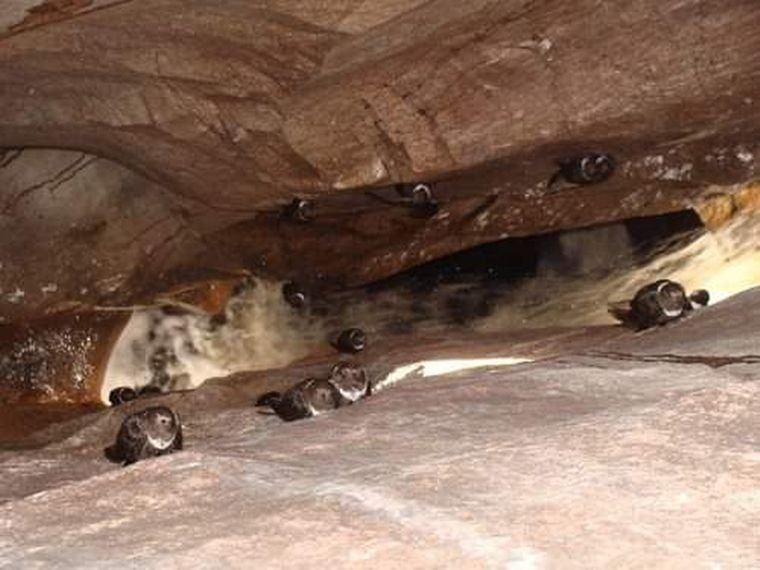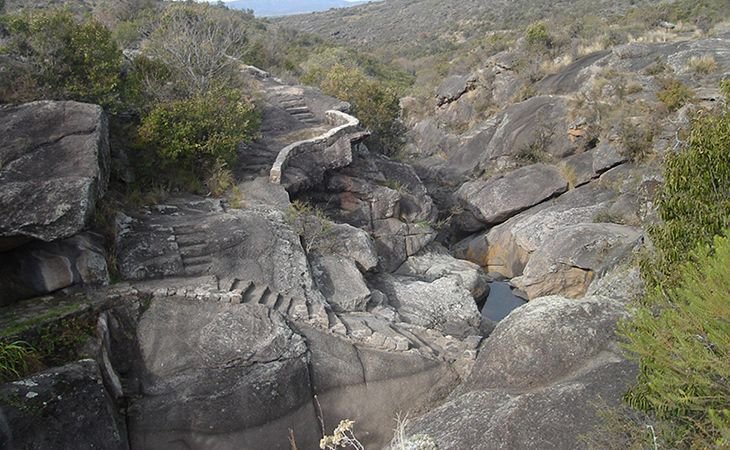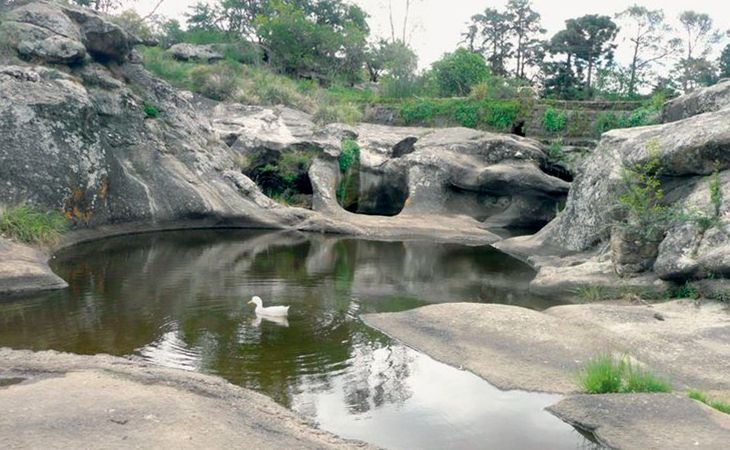Just 8 kilometers from Tanti, on the road that connects this town with Cosquín, is one of the 7 Natural Wonders of Córdoba. This is the Cueva de los Pajaritos in the Punilla Valley, where large stones shaped by erosion give rise to unique figures.

"The head of the Indian", "The tank", "The monkey", "The dog", "Mirador del Lago San Roque", "The Rain of Love" and the "Forest of the goblins", are some of the formations rocks that by their details acquired that identification.
It is in this place where unique species of flora and fauna inhabit. When going through its entire length, one can come across ancient caves where a large number of swifts or squeaks find shelter. These white-necked black birds that sing with great intensity are the ones that can also be seen around the ford of the Mallín stream.

At the same time, wild cats, pumas, and gray and red foxes also stand out in the area. These move between the aguaribay, the ceibos and the eucalyptus that print their landscapes in green. In addition to coconuts, blackheads and piquillines, which also characterize this portion of the mountain range.
To enjoy nature beyond, there is a tourist complex nearby that has a dining room, grills and tables, camping and swimming pools to spend the day with the family.
Amazing species
The chirrio is a swift larger than the swallows (Streptoprocne zonaris), with a strong build, especially on the wings. They have calluses on the elbows, which together with the tail form their three points of support. The tail ends in sharp points. She opens it like a fan, using it as a support on the stones. It is a species of short legs with sharp and strong nails, which cling to rocks.

Swifts are the only birds that inhabit vertical stone walls. Among them, the white-collared swift or "chirrio" is the largest. Its name comes from the loud shrieks it emits when it returns to the cave after flying all day. Also, they are known as aguateros birds, because they usually hover over the Mallín stream, announcing the rain 12 or even 24 hours in advance. It feeds on insects that it hunts on the fly, thus providing a service to humans and positioning itself among the most useful species.
Collared swifts
They leave at dawn in search of their food and return at dusk. They form flocks of between 20 and 40 little birds. They live in humid caves in the center and north of the country. They nest in the Cueva de los Pajaritos, Garganta del Diablo, Lluvia del Amor and other gorges along the Mallín stream. They can be seen at sunrise and sunset. At night, only in the cave, more than five hundred (500) chirps have been counted. Their nest is a cup-shaped pad built with mud, moss, roots, and liverworts, sometimes lined with dry leaves, moss, and plant fibers.

The size of its posture is two eggs, which it incubates for 30 to 35 days. The young acquire all the plumage necessary to fly from 45 to 55 days after hatching. The young have only one attempt to learn to fly, due to the location of the nests. Because they have short legs, the swifts cannot fall to the ground, since by not being able to "carriage" to take flight they would die. Most of its life is spent in flight. Due to its way of life, morphological structure and beauty, it is considered a unique species.

I am new to this community but I am loving it, thanks all for the welcoming!